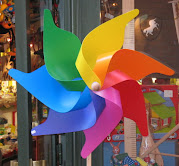Yesterday morning Jooseop Keum, who arrived in Geneva recently as programme executive for mission at the WCC, preached a fascinating and wonderful sermon charting his own hermeneutical journey with the parable of the good Samaritain - from Sunday school, through theological school, to Minjung activism against military dictatorship. He drew together this hermeneutical journey by speaking of the powerful silent interfaith witness of four priests, Buddhist, Roman Catholic and Protestant, who walked silently, slowly and painfully 400 kilometres in Korea from the site of a proposed mud-flat land reclation site to Seoul. They walked the 400 km by taking three steps forwards and then bowing down and prostrating themselves (Sam Bo Il Bae). They said nothing but in Samangeum at the life-rich mud flats, they distributed a leaflet of protest. News of their walk spread over the three months it took them and by the time they arrived they had been joined by thousands from different religions.
"In the statement, the priests had said, “We hear the cries of numerous living creatures in Saemangeum every night.” “The lives in this mud flat called us to stop the wind of death in the name of development.” “Therefore, we, as priests of Korean religions, begin Sam Bo Il Bae for the repentance of all human exploitation against nature.” They declared, “The lives in this mud are alive and breathing, our neighbours as much as humanity!” This statement was a strong request for the repentance of modern humanity. It requires us to convert our way of life from emphasizing only material riches. The message of the four priests echoes that the other living creatures have the same nature and value of life from heaven as each human being. They affirmed, “the spirituality of co-existence in the network of life is the only way to heal the sin of our greed.”
These four priests read together the story of the Good Samaritan from an entirely different perspective. They approached the text beyond an anthropocentric view. They interpreted that all creation is the neighbour of humanity. In their method of protest, they chose not a struggle but Sam Bo Il Bae, which is a traditional ascetic discipline for repentance in Korean Buddhism. They expressed their message as an act of asceticism like the suffering of the lives in the mud flat. As is the way of a Roman Catholic retreat, they did not speak out in spoken language during the discipline, but prayed as a whole body for three months. This was a soundless spiritual echo to all Koreans."
Jooseop ended his sermon by encouraing us to interpret the parable of the good Samaritain in a way that does not only care for human beings bu for the whole of creation, saying:
"The question, “who is my neighbour” is a call for us to hear all the cries of suffering creation and humanity with sensitive ears of spirituality. It is a calling to commence a pilgrimage of the Good Samaritan, who was Jesus himself as the Suffering Servant, for life in all its fullness."
You can find the full liturgy for the service here.
Tuesday, 15 April 2008
Beyond anthropocentric answers to the parable of the good Samaritan
Publié par Jane à l'adresse 21:46
Libellés : sermon, Spirituality
Subscribe to:
Post Comments (Atom)






0 Comments:
Post a Comment